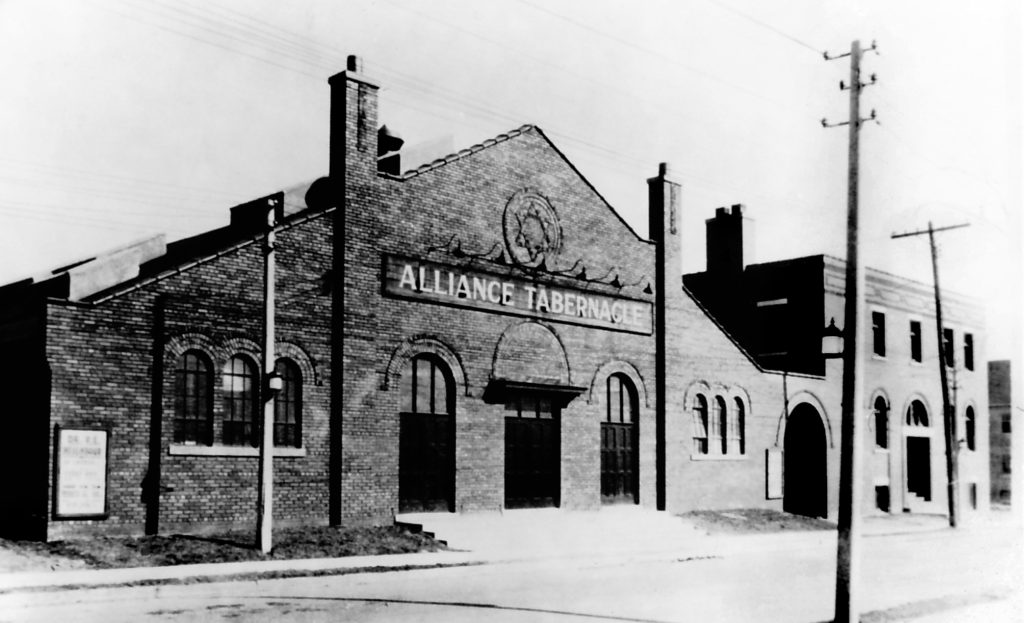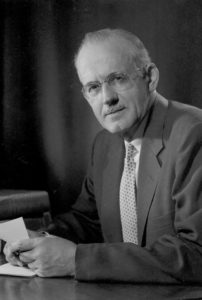Local History
What is now Ritson Road Alliance Church began as a tent meeting on the corner of Wilson Rd. and Athol St., back in June of 1954. The tent was fine for the summer, but that fall they began holding their morning services in a schoolhouse on Thornton Rd.
As the church grew, they eventually purchased their own building on Bond St. in 1957. This building was eventually put up for sale with plans of building a new facility at its current location on the corner of Ritson Rd. N. and Oshawa Blvd. The Bond St. building was sold in 1970 and the church met at Hillsdale Public School while the new facility was being built. This was completed in January of 1971, and Ritson Road Alliance Church has been here ever since.
Denominational History
The Alliance Canada (also referred to as C&MA) grew out of the vision of Rev. Albert Benjamin Simpson, who was ordained in the Presbyterian Church in 1865 and became the pastor in one of Canada’s most prestigious pulpits. During the next number of years, the Holy Spirit revolutionized his life, making him more passionate for neglected people and people living in poverty at home and around the world.

ALLIANCE TABERNACLE
In 1887, compelled by a sense of urgency to take the message of Jesus Christ to all nations, Simpson was used by God to give birth to The Christian and Missionary Alliance. It was only natural that his vision should extend to Canada. Many of the leaders in those first years were Canadians. The first Alliance church in Canada was Bethany Tabernacle, founded in 1887 by John Salmon in Toronto.
Dr. William Cassidy, a Toronto medical doctor, was the first ordained missionary in the new mission society. He died of smallpox en route to China. However, his death was the “spark that ignited the Alliance missionary blaze” which has been burning to this day.
By the 1920s, the C&MA became a major evangelical movement both in the United States and Canada. In Canada, saddle-bag preachers visited the homesteads of the West, and evangelists conducted campaigns in the East, bringing many people to Christ. By 1926 there were 19 “branches” in eastern and central Canada and four in western Canada. The growth of the church in the 1930s was in direct contrast to the depression experienced by the entire country.
In 1941, the Western Canadian Bible Institute was opened in Regina as a direct result of the need for trained workers.
 A.W. TOZER
A.W. TOZER
Aiden Wilson Tozer served pastorates across the United States, including 30 years in Chicago. He became known as a writer with a wider evangelical audience and his writings continue to influence Christians around the world. His final pastorate was at the Avenue Road Church in Toronto, Ontario. From there, his sermons and writings greatly impacted Canadians in the post-World War II years.
Throughout the early years, the C&MA in Canada was governed by the U.S. Alliance. An autonomous Christian and Missionary Alliance in Canada came to a new direction during the founding Assembly held in Winnipeg in June 1980. A constitution was adopted, a president elected, and a Board of Directors chosen in preparation for full Canadian autonomy on January 1, 1981. The two organizations, from Canada and the U.S., still maintain a close cooperative relationship today.
Over the past 30 plus years, the Alliance Canada has had four presidents: Mel Sylvester (1980-1992), Arnold Cook (1992-2000), Franklin Pyles (2000-2012), and David Hearn (2012-present). We have grown from 241 churches to more than 440.
